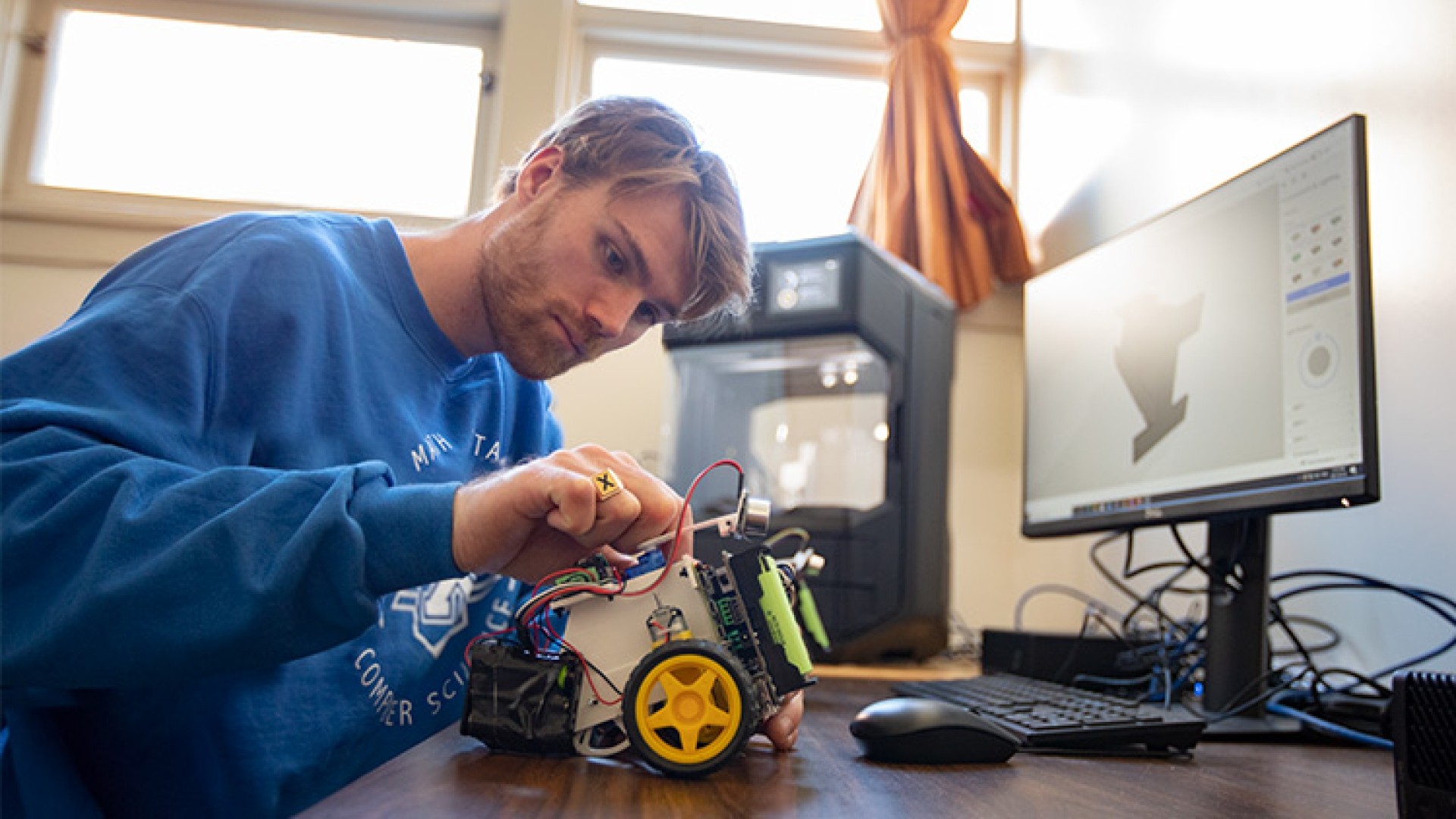
For almost six months now, Noah Barrett, a fourth year honours computer science student from Tatamagouche, NS, has been building a pair of robots from the ground up as part of his honours thesis, working with his supervisor, computer science professor Dr. James Hughes.
He’s had to engineer the robots and build parts with a 3D printer in Dr. Hughes’ Convergence Lab, code them, and add algorithms. As the project developed, so too did his interest in seeing how we can relate human interactions to the actions the robots are taking.
“I was interested in looking at relating how people interpret different behaviours in robots to the specific actions those robots were taking,” he says.
“With the growing presence of robots in our day-to-day lives, it is becoming increasingly important that we ensure we have a rigorous understanding of human interpretations of robots and the level of trust we associate with them.”
To investigate this, two robots were built and a study, including a survey of StFX participants, carried out. The robots were given the task of learning how to interact with their environment and did so by using artificial intelligence. People were then asked to observe two different types of videos: one being the robots learning how to interact with their environment, and the other being the robots carrying out a behavior that they had previously learned.
“In the end, we could not find any statistically significant results, but a moderately sized data set was produced, which could potentially be used for further insight,” he says.
Dr. Hughes says the robots are quite elaborate little things. However, what makes them particularly fascinating, he says, is that these little robots learn. “They learn with a special type of Machine Learning & Artificial Intelligence how to navigate their world,” says Dr. Hughes.
“Long story short, the robots are turned on, they have no idea what they are or what they can do, but over time they learn to (a) move, (b) observe features in their environment, and (c) how to navigate their environment without crashing into things, although, sometimes they fail miserably.”
Mr. Barrett says the process to build the robots was an elaborate, time-consuming one, and at times difficult since he is not an engineer. But, it was also a fun and interesting project, he says, particularly as he was able to tweak prototypes using the 3D lab. He says he learned a lot over the project duration from working with electrical components to learning how to run algorithms on a microcomputer.
He describes his creations as pretty simple robots with two wheels that allow them to move forward and back, left to right. They have an ultrasound sensor to sense distance, and the key part, a credit card shaped, powerful microcomputer, that allows for the algorithms.
Mr. Barrett says there are several different layers to the code in the robots.
“At the lowest level, we need code to allow the robots to be able to act on their environment, for example move forwards or backwards, and also to sense their environment, in the case of these robots to use soundwaves to detect distance. Then we need to construct a representation of the environment it is acting in, in this case they need to be able to tell what exactly they can do, and also whether doing particular actions are good or bad. Lastly, they need to have the algorithms that allow them to learn in the given environment. Because of the open-source nature of software, the development of these different layers was streamlined by using code produced by experts in the field.”
Mr. Barrett will continue his studies in artificial intelligence following his graduation from StFX when he pursues a master’s degree in computer science at Dalhousie University.
He says he is particularly interested in the field as society becomes more heavily reliant on AI algorithms, while at the same not fully understanding a lot of them “and it’s important that we do. That’s my motivation.”
He says StFX has been an ideal place to complete his undergraduate degree. “It’s community-centred and you’re able to have tight-knit relationships with professors. Even this opportunity, I doubt I would have had at a larger school. I feel really grateful.”
This research is, in part, made possible by the Government of Canada Research Support Fund.

